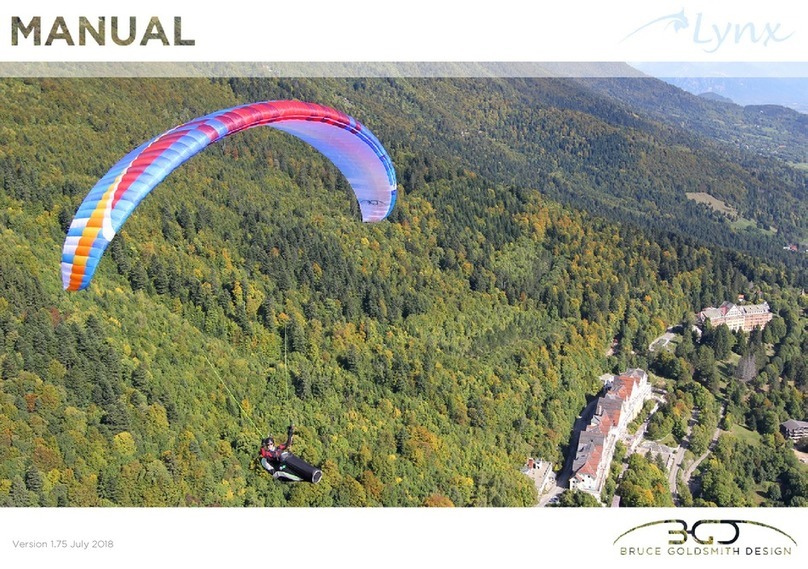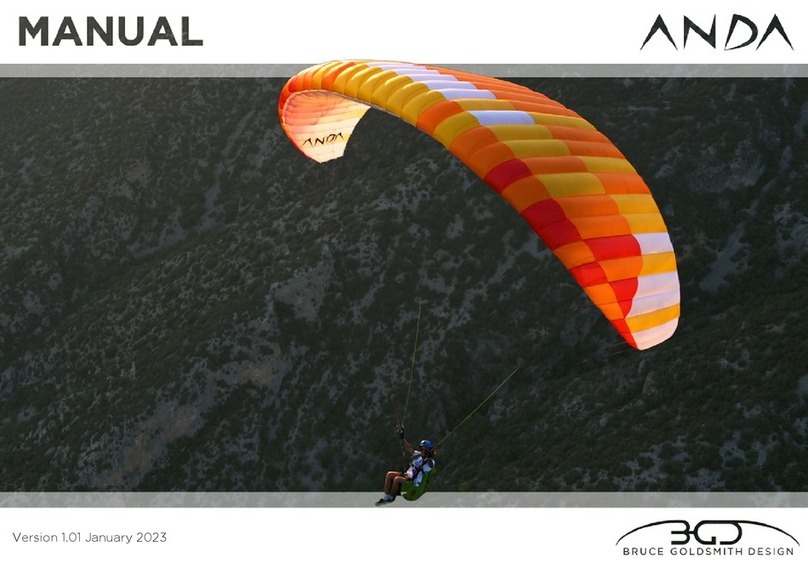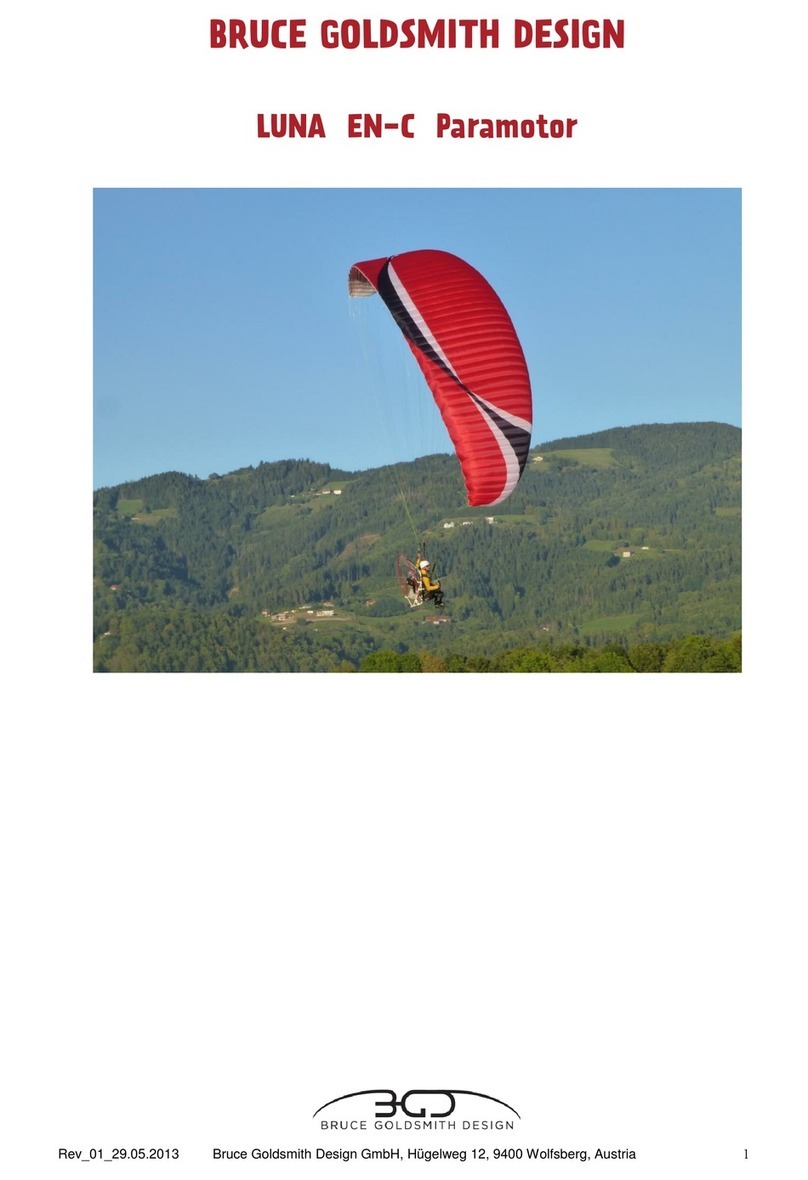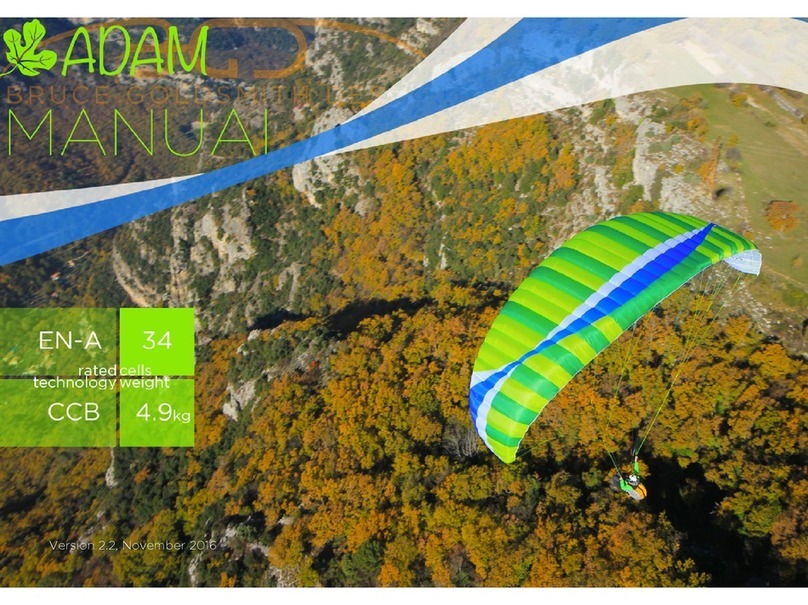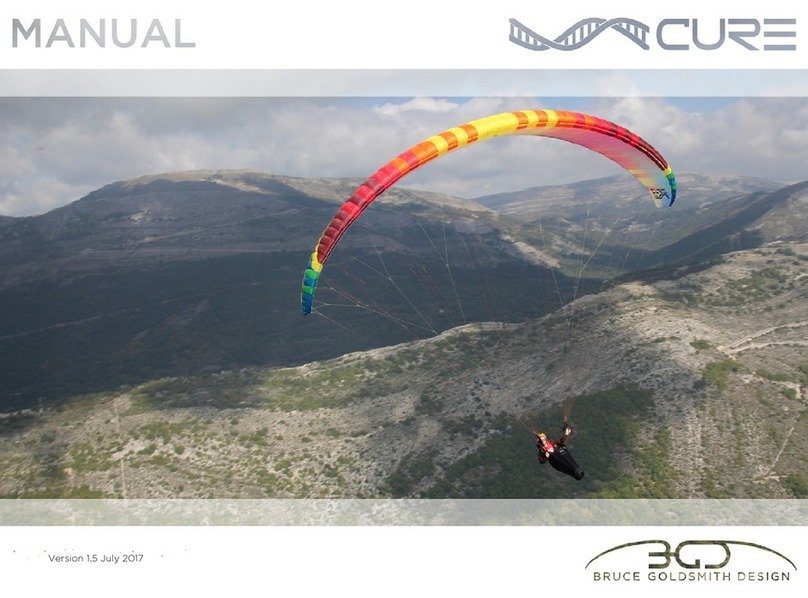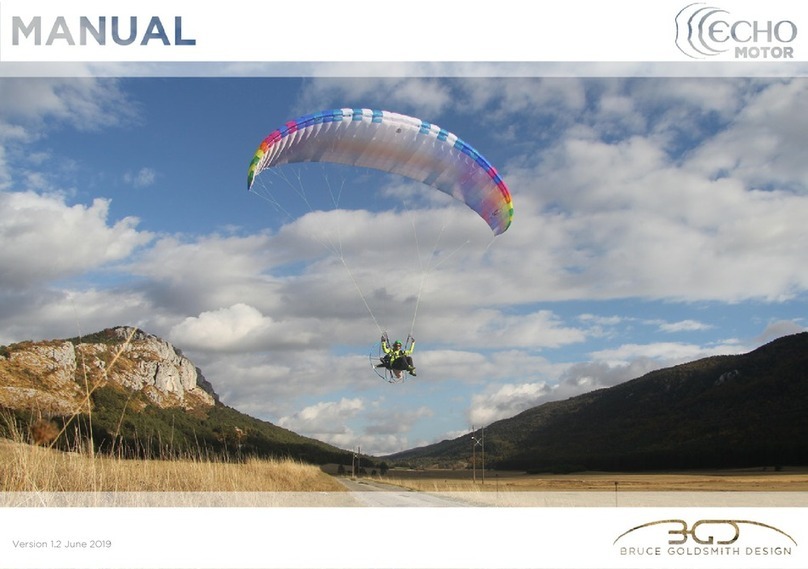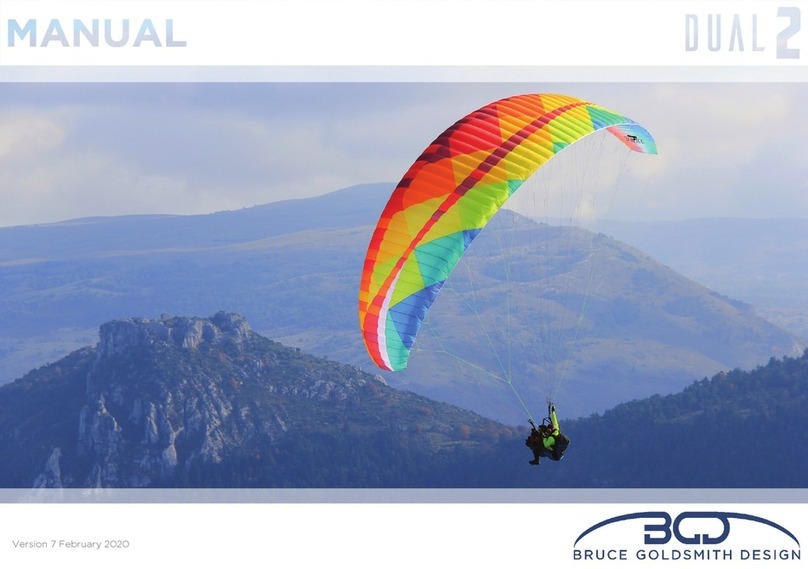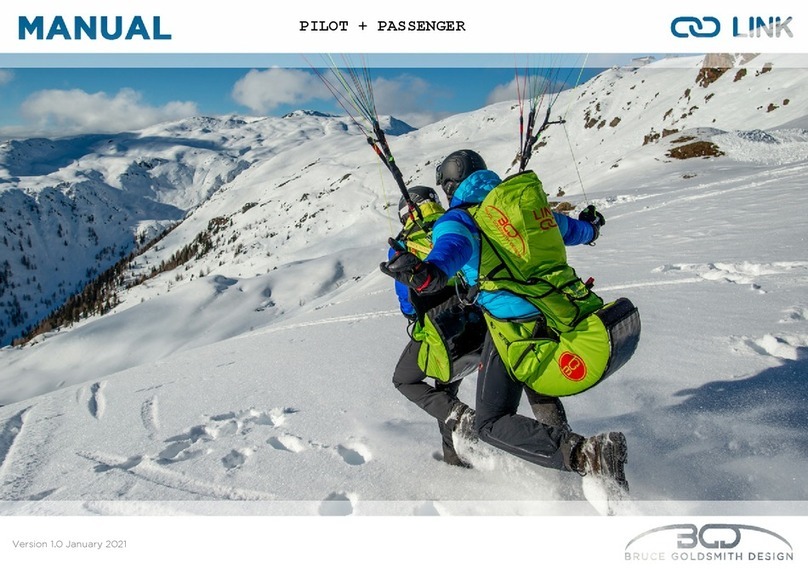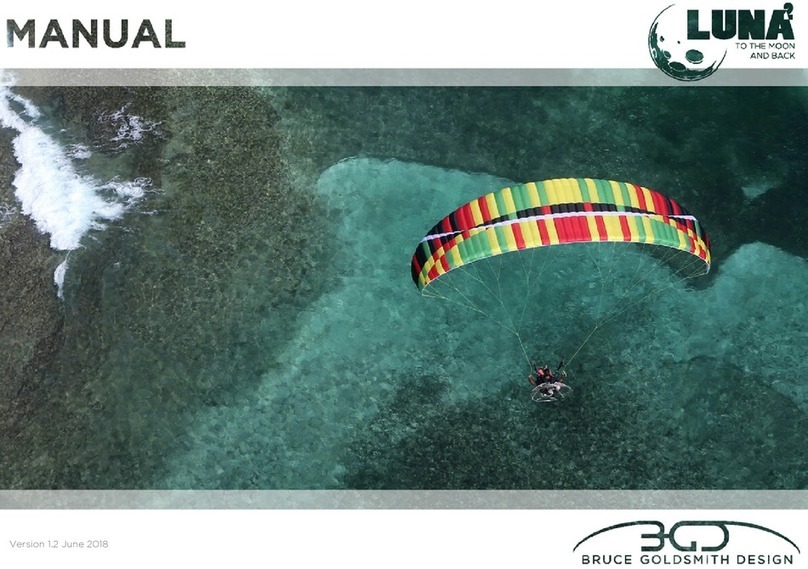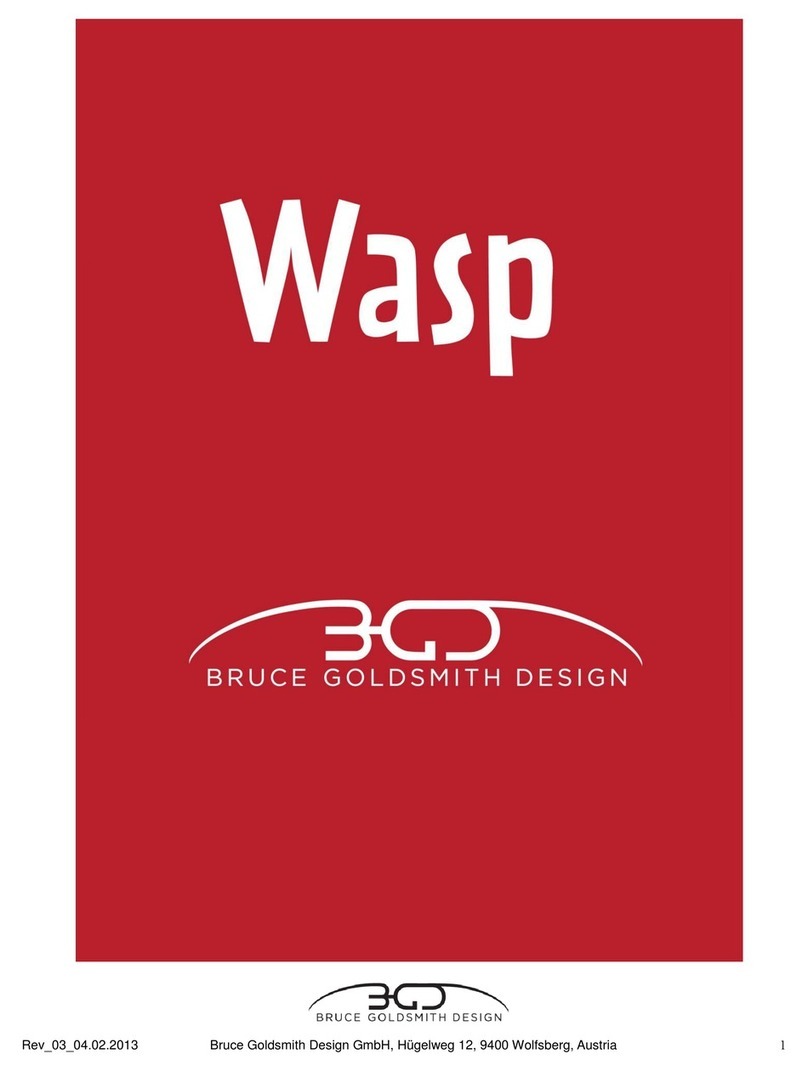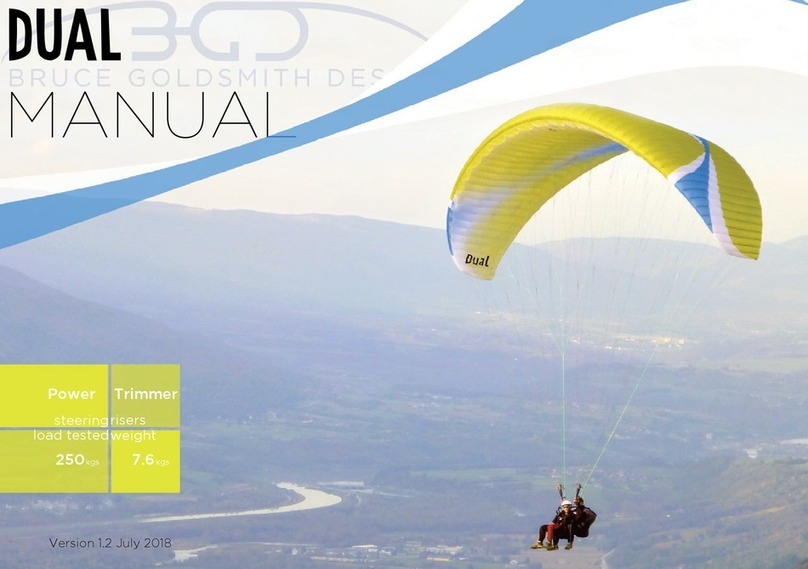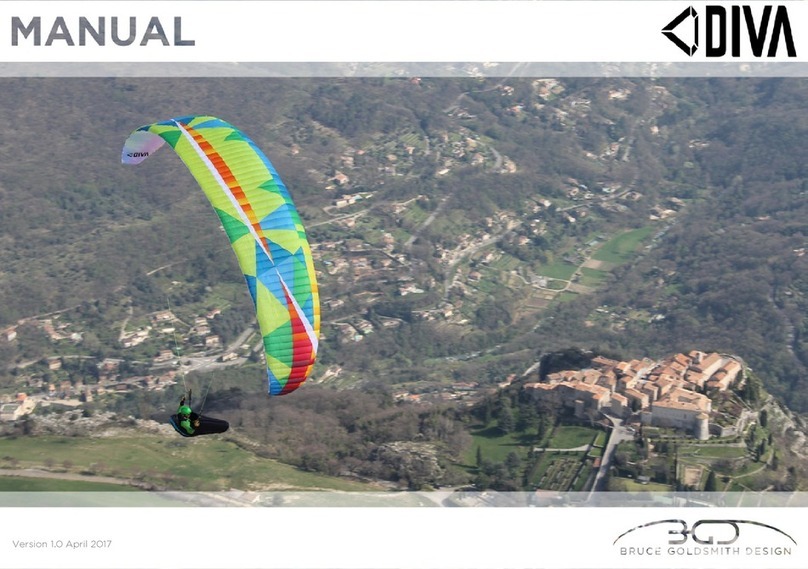
9
EPIC 2 MOTOR-manual-EN-1-01 November 2022
closed, maillons level. We recommend the trimmers are partially released for launching in strong-wind (more than
10km/h) conditions.
Never try to launch if the wing is not fully inated and above your head, and if you do not have full control of pitch
and / or roll.
Initial climb
Once in the air, you should continue to face into the wind while you gain altitude. Leave the trimmers in the take-off
(closed) position to attain the best climb rate. Do not attempt to increase your climb rate by braking, as using the
brakes combined with the engine’s thrust can increase the angle of attack to the point where the wing can stall. In
addition, this high angle of attack can result in a big dive if the motor suddenly dies, which could be dangerous if you
are near the ground.
Do not initiate a turn until you have sufcient height and speed to do so. In certain circumstances, a pilot can induce
unintended oscillations. This can be due to a combination of the engine/propeller and pilot’s weightshift and / or
action on the brakes. To stop these oscillations you should reduce the power, ensure that you are seated centrally
and not accidentally applying weightshift, and that you are not acting on the brakes. Once the oscillations have
stabilised you can gently reapply power.
Straight ight and trimmers
After take-off, once you have gained a safe altitude, if you want to increase your speed you can open up the trimmers
completely, keeping your hands up.
To reduce fuel consumption or to y in thermals, the trimmers should be closed, pulled down to their maximum.
It is important to regularly check the wear on the trimmers and that the system is functioning cleanly with no sticking
points. If they are showing signs of wear, the trimmers should be replaced by the pilot.
Flight Characteristics
